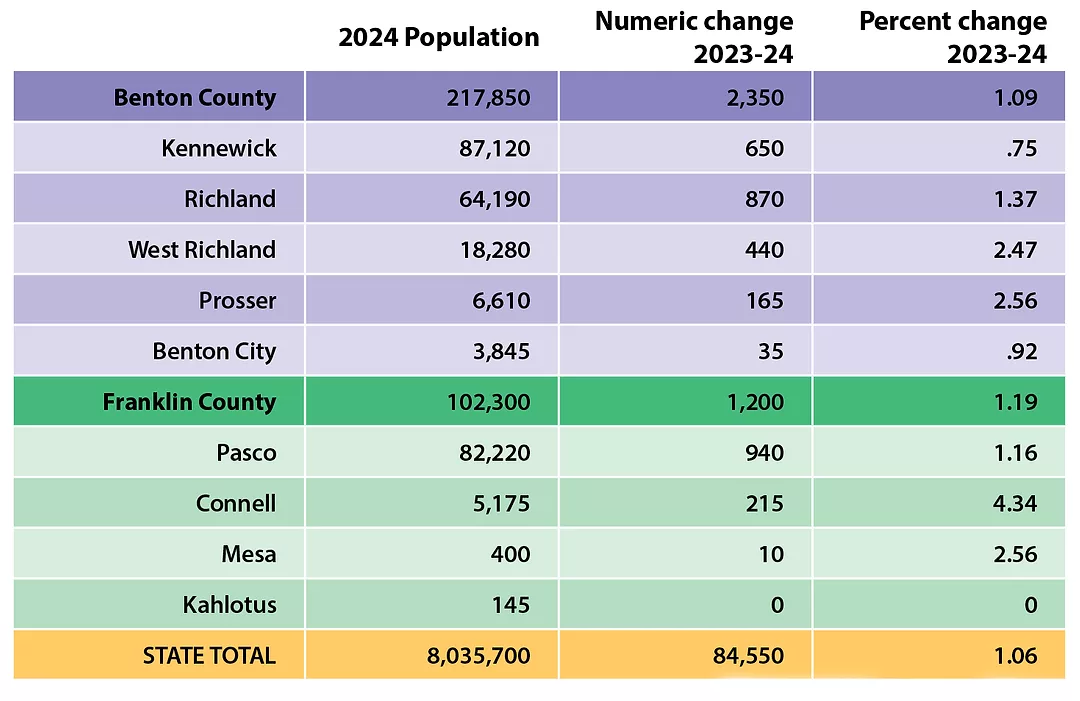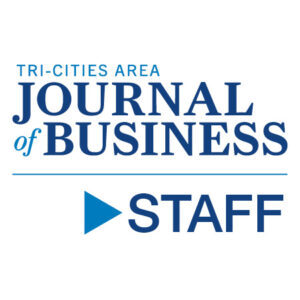
Home » Tri-Cities region continues to see year-over-year growth
2024 population estimates
Tri-Cities region continues to see year-over-year growth

July 15, 2024
The Tri-Cities region pushed past the 300,000-population mark three years ago and the growth keeps coming.
If the area keeps on track with more than 1% growth each year, the population could hit 350,000 within a decade and 400,000 within 15 years.
Most communities within the Tri-Cities area saw year-over-year growth, according to new estimates from the state Office of Financial Management released in late June.
Franklin County, population 102,300, grew 1.2%, adding 1,200 people.
Benton County, population 217,850, grew 1.1%, adding 2,350 more people.
This brings the two-county area’s population to 320,150.
The cities that grew the most within the region in the past year were: Connell, 4.3%; Prosser, 2.6%; Mesa, 2.6%; and West Richland, 2.5%.
Richland grew 1.4%, Pasco 1.2%, and Kennewick 0.75%.
The tiny town of Kahlotus in Franklin County, population 145, was the only city in the region not to post any growth.
Pasco ranked 11th in the state by population change in the latest count. Richland ranked 13th and Kennewick 24th. Seattle, Vancouver, Tacoma, Redmond and Spokane Valley rounded out the top 5.
The state’s total population grew by an estimated 84,550, to top 8 million as of April 1.
The state once again saw year-over-year population growth, according to new estimates from the state Office of Financial Management.
And while the growth is slower than the annual average from the last decade, it’s similar to last year.
Looking at the past decade, the state’s population has grown by 329,400 people since April 1, 2020, or about 4.3%.
Net migration (people moving in minus people moving out) is the largest driver of population growth, accounting for 82% of population growth (69,100 people, down 3,300 from last year).
Natural change (births minus deaths) accounted for 18% of the annual growth or 15,500 people.
Births have been declining statewide since around 2017, driven largely by decreases in the fertility rates of mothers in their teens and early 20s.
Before and after the Covid-19 pandemic, deaths – the other side of natural change – have been trending upward and will continue to do so as the baby boomer generation ages.
Latest News Local News
KEYWORDS July 2024
Related Articles
Related Products





